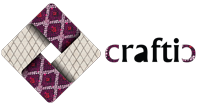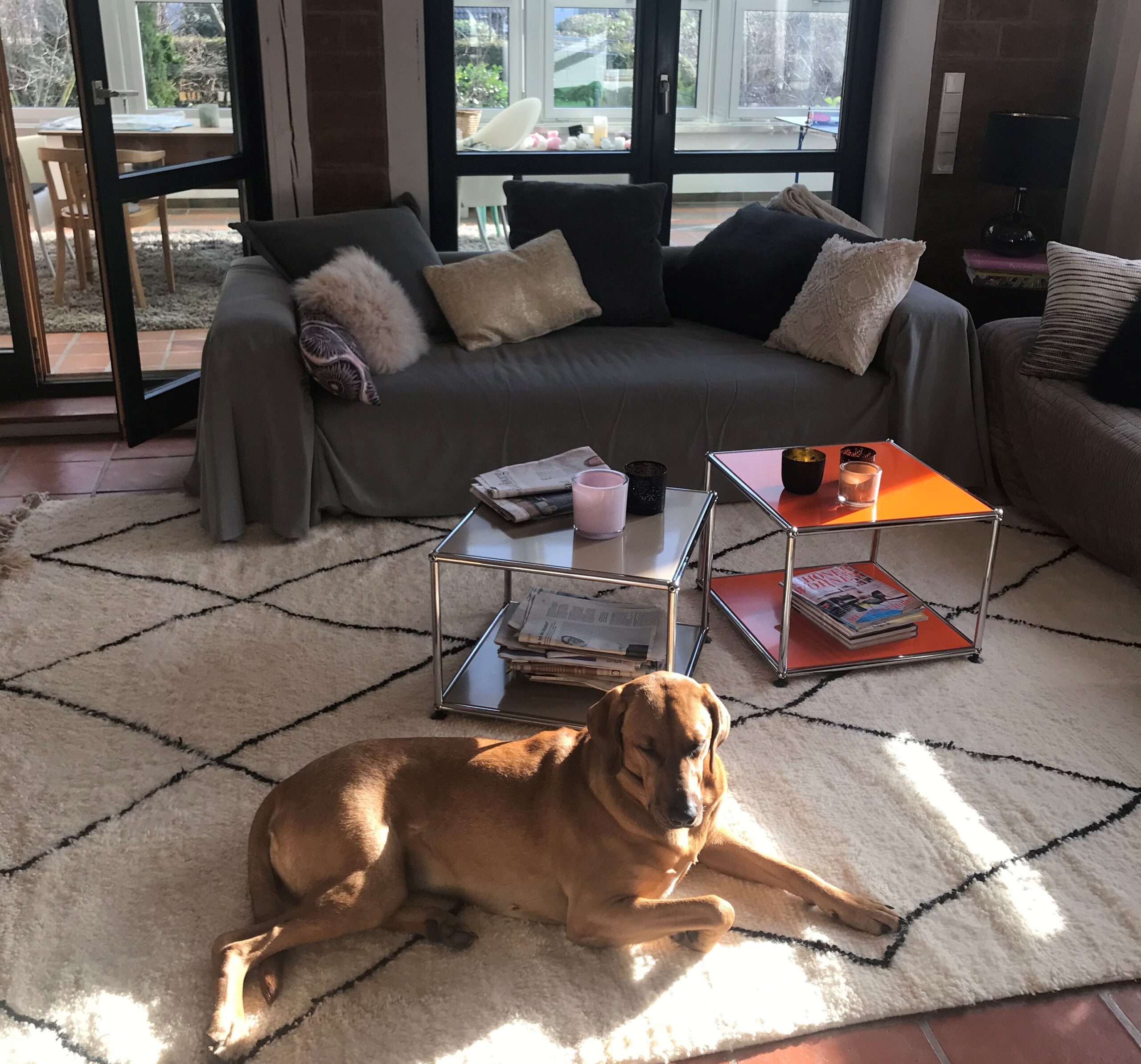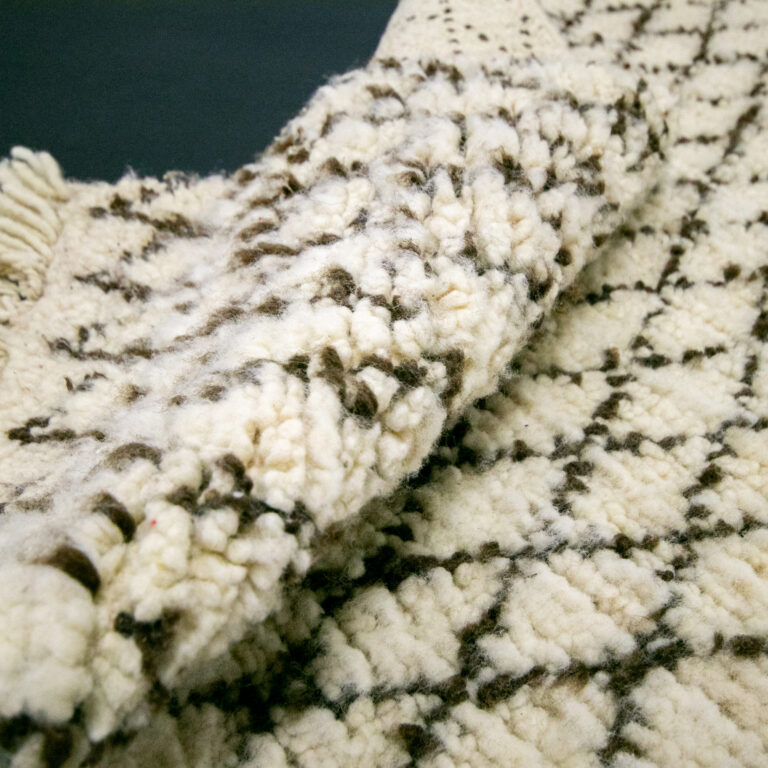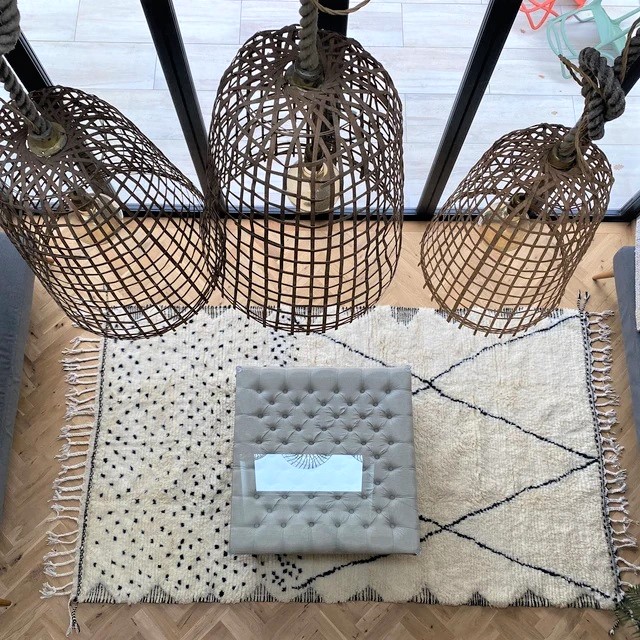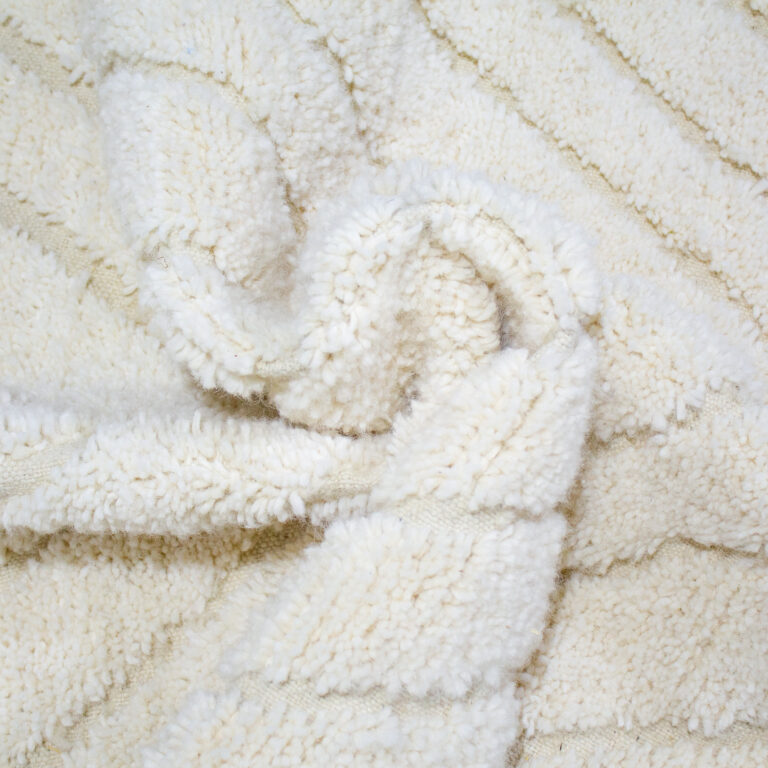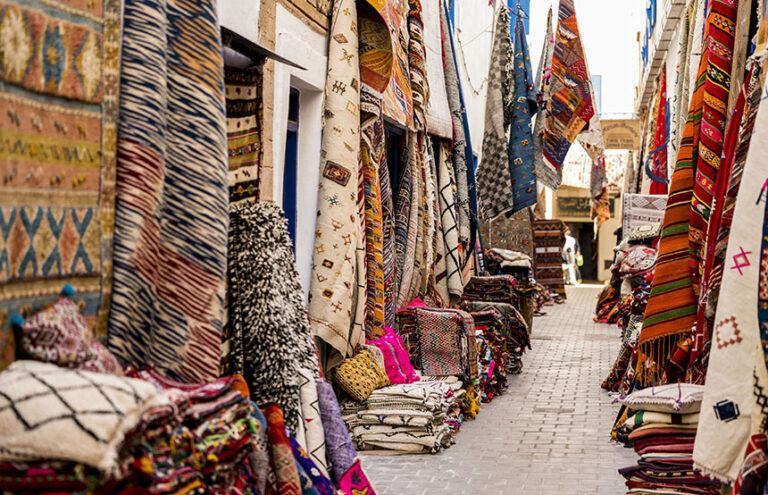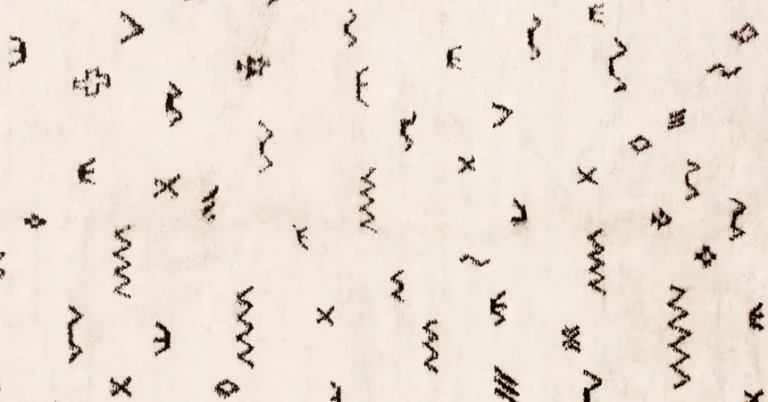The Enduring Allure of Beni Ourain Rugs: A Timeless Tale from the Moroccan Middle Atlas
The Enduring Allure of Beni Ourain Rugs: A Timeless Tale from the Moroccan Middle Atlas
The name Beni Ourain rugs, sometimes spelled Beni Ouarain, resonates with a sense of understated elegance and timeless style in the world of interior design. But beyond their aesthetic appeal lies a rich history deeply intertwined with the lives of seventeen distinct Amazigh (Berber) tribes nestled in the mountainous landscapes of Northeastern Morocco, east of the vibrant city of Fez.
This comprehensive guide delves into the captivating story of Beni Ourain rugs, exploring their origins, unique characteristics, their rise to global fame, and how to discern a genuine piece of this Moroccan heritage.
I. The Roots of Tradition: The Beni Ourain Tribes and Their Woolen Legacy
The Beni Ourain people are traditionally pastoralists, their lives intimately connected to the land and their flocks of sheep. For centuries, the thick, lustrous wool of these hardy animals has been the lifeblood of their craft. In Morocco, the art of wool processing boasts a history stretching back over 2000 years, and within this ancient tradition, the women of the Beni Ourain tribes have been weaving their distinctive rugs for generations.
II. More Than Floor Coverings: The Original Purpose of Beni Ourain Weavings
These weren’t initially created as decorative accents for a global market. For centuries, Beni Ourain rugs served a vital purpose within the community homes of the Middle Atlas. Their thick, dense pile provided crucial thermal insulation against the region’s contrasting climate – offering a cool barrier against the scorching summer heat and a warm embrace during the harsh Moroccan winters.
Beyond insulation, these versatile textiles were also ingeniously utilized as comfortable blankets and, when stacked upon one another, transformed into cozy mattresses, highlighting the resourcefulness and practicality embedded in their creation.
III. A 20th Century Revelation: Beni Ourain Rugs Conquer the World of Art and Architecture
The 20th century marked a pivotal moment for Beni Ourain rugs, propelling them far beyond the borders of Morocco and into the discerning worlds of art and architecture. Visionary modernist architects and designers of the 1920s and 1930s, including luminaries like Alvar Aalto and the iconic Le Corbusier, recognized the inherent beauty and understated sophistication of these textiles, incorporating them into their groundbreaking designs.
Even the celebrated French painter Henri Matisse, a master of Fauvism known for his simple and essential forms, was deeply captivated by their unique aesthetic. He affectionately dubbed them “Les géants blancs” or “The white giants,” a testament to their often impressive dimensions and luminous presence.
IV. Identifying Authenticity: The Hallmarks of a Genuine Beni Ourain Rug
So, how can you recognize a true Beni Ourain rug? Look for these defining characteristics:
- Luxurious Thickness and Softness: Authentic Beni Ourain rugs are known for their wonderfully thick and incredibly soft pile, a direct result of being hand-knotted with natural, undyed sheep’s wool. This creates a truly tactile and comforting experience underfoot.
- Natural Wool Palette: Traditionally, the foundation of a Beni Ourain rug is a spectrum of undyed wool, ranging from the purest light white to warm ivory and rich cream. This natural palette lends a sense of purity and timelessness.
- Distinctive Geometric Patterns: The hallmark of Beni Ourain design lies in its striking, dark geometric patterns drawn against the light wool base. These typically feature rhombuses (diamonds), often arranged in linear or more organic compositions. Lines, chevrons, and other simple geometric motifs also appear, contributing to their minimalist yet impactful aesthetic.
V. The Evolution of Tradition: Contemporary Beni Ourain Rugs
While the origins of Beni Ourain rugs are deeply rooted in the specific craftsmanship of those seventeen Amazigh tribes, the immense global demand has led to an interesting evolution. Today, rugs marketed as Beni Ourain are not exclusively woven by artisans from these original tribes. Skilled Amazigh weavers from other regions of Morocco, respecting the established aesthetic and name, also contribute to the production.
This evolution has also brought about changes in color and design. While the classic undyed wool and geometric patterns remain highly sought after, contemporary Beni Ourain rugs can now feature a wider array of colors, reflecting the creative and ever-evolving nature of Moroccan craftsmanship. Designs, too, have become more varied, while still retaining the fundamental minimalist and geometric spirit.
VI. The Enduring Popularity: Why Beni Ourain Rugs Captivate the World
The enduring popularity of Beni Ourain rugs across the globe stems from a compelling combination of factors:
- A Rich History with Modern Appeal: These rugs boast an ancient heritage, yet their inherent simplicity and clean lines harmonize beautifully with the most contemporary interior design styles.
- Timeless Elegance and Versatility: Their understated sophistication and neutral palette make them incredibly versatile, seamlessly adapting to a wide range of aesthetics and enhancing any room, from the cozy living room to the serene bedroom.
- A Touch of Natural Luxury: The thick, soft, natural wool provides a luxurious tactile experience, adding a layer of comfort and warmth to any space.
VII. Navigating the Market: Beware of Imitations
However, the global fame of Beni Ourain rugs has unfortunately led to a significant downside: the proliferation of copies. Online marketplaces and shops often sell rugs under the guise of “Beni Ourain rug” or “Berber rug” that are mass-produced in factories in countries like Turkey, China, and Pakistan, utilizing materials of significantly lower or even poor quality.
VIII. The Unmistakable Value of Authenticity: Owning a Genuine Beni Ourain
Those who have experienced the genuine article understand the profound difference. Owning an authentic Beni Ourain rug, meticulously handcrafted with thick, soft, virgin wool, is an entirely different experience – one that a mere imitation cannot replicate. It means possessing a unique and refined piece of timeless beauty, imbued with history, culture, and the skilled touch of a Moroccan artisan. It’s an investment in enduring quality and a tangible connection to a rich and fascinating heritage.
